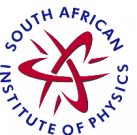SAIP WEBINARS
Title: How blue skies research created billions of Rands worth of impact in South Africa.
Speaker: Prof. Mike Kosh – South African National Space Agency (SANSA)
Date: 19 February 2021
Link: https://zoom.us/webinar/register/WN_d9zbJkncTjqwUfs8LslqEA

Abstract:
We are fascinated by the polar auroras, optical displays of great beauty which have been studied for many decades. The advent of digital technologies has allowed digital image processing to be applied to the study of elusive phenomena such as the black auroras and the artificial auroras. Wildfires are a huge socio-economic problem in Africa.
Advanced image processing techniques learned from studying the auroras has been applied to rapid remote detection of wildfire smoke plumes. Hundreds of night-vision cameras have been deployed. A satellite burn scar analysis shows the reduction of wildfires has saved South Africa billions of Rands in economic and environmental damage.
Brief CV:
Prof Mike Kosch was born and raised in Durban where he also achieved his BSc Electronic Engineering in 1984 and PhD in Space Physics in 1991 following a life-changing experience over-wintering at the SANAE Antarctic research station 1984-1986. He was based for over 2 decades in Europe, first as a postdoc and scientist at the Max-Planck Institute in Germany during the 1990s and then as a lecturer, professor of Experimental Space Science and faculty research Dean at Lancaster University in the UK during the 2000s. He has held research fellowships in Australia, twice Japan and twice USA as well as many research visits to Norway. Since 2014, he is the chief scientist at the South African National Space Agency (SANSA) in Hermanus, managing the Space Research and Applications group including the Space Weather Unit.
He also co-directs EnviroVision Solutions, a spin-out company specialising in rapid wildfire smoke detection. His research has focussed mainly on auroral physics and the electrodynamics of the polar upper-atmosphere, primarily using night-vision optics and radars, as well as experimental plasma physics using high-power radio waves beamed into the ionosphere as a natural laboratory. He has led many experiments at major international facilities (e.g. EISCAT in Scandinavia, HAARP in Alaska and Sura in Russia). To support the research, he operates 2 optical observatories in Norway, 1 in Sutherland and assembles bespoke optical instruments. He has published over 150 papers in international peer-reviewed journals and graduated 50 postgraduate students.

